Share
Explore
Rippey 5.0 Guide - Employees
Pages
 4.2 Workflow Steps
4.2 Workflow Steps
We will be going through each Workflow step and the contents it will represent here. The Workflow steps are:


Workflow steps
Extract Email
This is the first state where the attachments sent by the clients through email or the documents uploaded in the dashboard itself is visible.


Extract Email State
Document Header


Document Header - Extract Email
The Document Header is explained in detail below from left to right:
State Wrapper


State Wrapper - Extract Email
In the Extract Email state, this section will only show the original attachment itself.
Footer


Footer - Extract Email
The footer will only have the Continue button which will direct user to another state.
Split Document
This is the second state in the dashboard where the original attachments sent by the clients is split and classified into multiple files based on document types.


Split Docuemnt State
Document Header


Document Header - Split Document
The Document Header is explained in detail below from left to right:
State Wrapper


State Wrapper - Split Document
In the Split Document state, the contents of this page is same as the one we have in our current dashboard.
Footer


Footer - Split Document
The footer will only have the Continue button which will direct user to another state.
Raw Data
All of the Raw Data states will be having similar layout. Only the json will be different based on whats needed.


Issuer Recognition State
The Raw Data steps are not related to a particular document but are related to the whole transaction itself. The JSON of all the split documents will be presented inside a single file.
Document Header


Document Header - Issuer Recognition
The Document Header will have three options: Edit, Copy and Export.
State Wrapper


State Wrapper - Issuer Recognition
The State Wrapper will have the whole JSON shown in that section.
Footer
The Footer will have the Continue button which will direct user to another state. But when a user makes any changes to the JSON, the footer will shows an additional button named Execute which will execute the change made by the user.


Footer - Issuer Recognition (Before Editing JSON)


Footer - Issuer Recognition (After Editing JSON)
Create Payload
The Create Payload state is where the whole process of fixing and filling will be taking place.


Create Payload State
Document Header


Document Header - Create Payload
The details on each component present in this header is explained below from left-to-right.


Category Dropdown
State Wrapper
The layout will have document and table data on the left section whereas form data in the right section.


Form Data


Table Data Section


Table Data Open
Similarly, users can also expand the table data horizontally by clicking on the Hide Form option.

If a table cell is empty, then a “-” will be present to represent the empty cell.
If a table cell is empty, then a “-” will be present to represent the empty cell.

Table Data Expanded


Empty Cell
At the end of each table row, we have two icons through which user can perform various actions. When the user clicks on the Pen icon to edit the whole row, the fields of that row becomes editable.


Editable rows in table data
Then we also have the menu icon present at the end of each table row. When clicked, a dropdown will be present where users will be provided with options for following actions:


Menu for each table row
Footer
The footer consists of two actions that user can take regarding the document.


Footer
Email Confirmation
This is the last step present in the Workflow Step which shows the mail sent to the client based on the transaction’s status.


Email Confirmation State
Document Header
We don’t have a document header in this state as it represents the whole transaction itself. After all the attachments inside a transaction goes through the steps, all of them are executed at once and mail is sent to the client as a whole.
State Wrapper
In this last step, the email that was sent to the client will be shown here.
Footer
Footer will not be here in this state since it is the last state and there’s nothing to continue on.
Want to print your doc?
This is not the way.
This is not the way.

Try clicking the ⋯ next to your doc name or using a keyboard shortcut (
CtrlP
) instead.